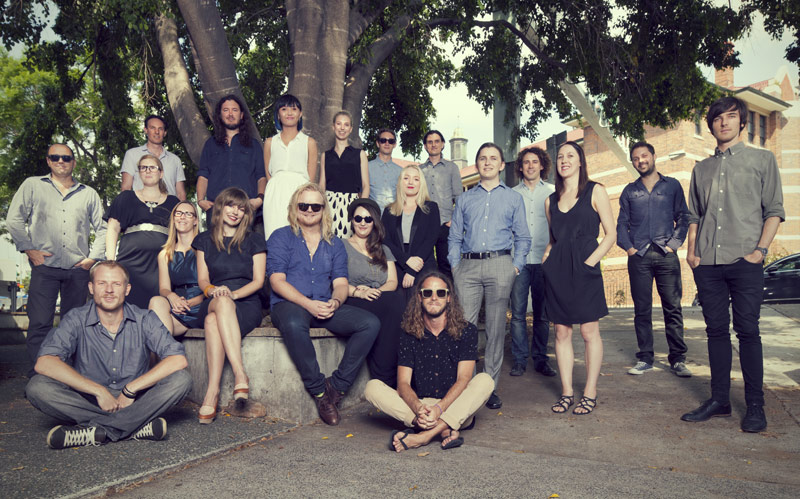CNET story: ‘Josephmark: the Australian architects of the new Myspace’, January 2013
A feature for CNET Australia; my first story for the site. Excerpt below.
Josephmark: the Australian architects of the new Myspace
The Brisbane design studio tasked with rebuilding Myspace tells CNET Australia about its vision for bringing Myspace its sexy back.
Picture a racehorse wearing blinkers, galloping across the turf, completely oblivious to its competitors. The animal runs its own race, at its own pace, never for a moment considering whether it’s leading or whether it might ultimately win. This is the image used by Ben Johnston, co-founder of Brisbane-based digital design studio Josephmark, when describing the ethos of a unique Australian team that has just put the finishing touches on a refreshed version of Myspace.
Speaking exclusively to CNET Australia, studio director Johnston was enjoying a rare opportunity to touch base in Brisbane with Josephmark’s general manager Carl Watney and creative director Jess Huddart. The studio’s 21-strong team has scarcely been in the same room in the last year, when Josephmark [pictured above] landed a contract to retool the world’s first truly global social network.
Johnston prefers the racehorse-with-blinkers analogy because he lives by the same mantra in his personal life. “[The point is] not to win a race, but to not get distracted by what’s on either side of you,” the 29-year-old said. “You set your own benchmarks, I guess. That, joined with a sense of curiosity, is what drives us to work, to go beyond a brief — to invest heavily in our own learning.”
The blinkers are evidently helping. All three Josephmark leaders told CNET Australia that they can’t name any other company in the design sector that they aspire to emulate. “There are aspects of other companies [that appeal], but I think we inherently live those traits,” said Johnston. “It feels good, because it means that as a company, we’re leading — even if we’re going in the wrong direction!” he laughed.
Though Josephmark has driven unique web design projects in recent years — including real-time music chart We Are Hunted and Australian independent journalism hub The Global Mail — this is the first time it is competing on the world’s stage as Myspace’s design and vision partners.
The pitch
Five design studios were invited to tender for the Myspace partnership; four of those were based in North America. The invitation arrived at just the right time for Josephmark. “Past clients helped firm up our resolve about what we know, and how we know things can work, too,” said general manager Watney. “If you’re going to do something bold and radical, and it’s design-led, the design has to overcome bureaucracy and egos and whatever else might be involved, and actually push through it. We have to stick to our guns if we’re committing to something of this size.”
Josephmark’s approach to the Myspace tender was straightforward. They simply asked themselves, “If Myspace was ours, what would we do with it?” Though the brief was “quite thorough”, creative director Jess Huddart said that the team soon decided to ignore it.
“We looked at it and went, ‘if you do what you think you want, then we’re just going to end up creating what you already have. That’s not going to solve this massive problem that’s ahead of you’,” Huddart recalled. “Then we took ownership of it, and I think that’s a massive difference between us and perhaps other studios in their responses. Rather than just simply doing what the client’s asking you to do, we actually own it as if it’s our own project.”
“There’s a certain boldness in that [approach],” admitted Johnston, “but effectively, it comes back to how we value our own time.” Josephmark didn’t approach the project with a pay cheque in mind. The studio saw this as an opportunity to make a real difference to an ailing, yet historic online media brand. “Obviously, there were certain things in the back of our minds, like, ‘it’s f***ing Myspace! Is there a chance for this thing to turn around?” And what would it take to turn it around?'” Johnston said.
The solution developed by Josephmark was delivered as a video pitch — which Johnston described as a “two and a half minute narrative capsule with a voiceover that painted a picture of what Myspace could be” — accompanied by a more traditional pitch document. “Unbeknown to us, the video went down extremely well, to the point where [Myspace executives] called everyone in and showed the whole company, saying ‘this is where we’re going!’ This is before they even engaged with us.” That video then went on to be used in the company’s sales pitches as they sought potential partners.
Josephmark’s pitch became the company’s decisive flag in the ground, allowing the company to state proudly: “This is what we’re doing.”
For the full story, visit CNET Australia. More on Josephmark here.
